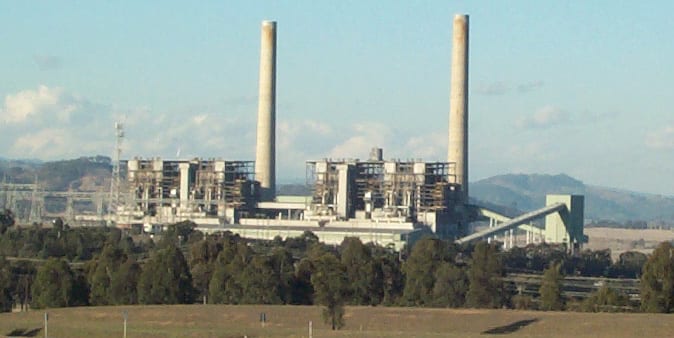
One of the four 420MW units at the Liddell coal generator in New South Wales will be out of action for most of the summer because of broken turbine blades – making supply increasingly tight in the state, and making a mockery of the Coalition’s push to keep the plant open longer in the name of “reliability”.
The number 2 unit at Liddell has not operated since early August. An AGL spokesman said that it may not be back in service until mid February, meaning that it will largely miss the summer heatwave conditions that will push demand up to near record levels.
“The unit at Liddell is out for turbine blade repairs. We are targeting a return to service between the end of January and mid-February,” the spokesman said in an emailed statement.
The loss of the unit came as another big generator, a 700MW unit at EnergyAustralia’s Mt Piper coal generator near Lithgow, was withdrawn this week due to tube leaks, just as an early summer heatwave made its presence felt across the state.
Meanwhile, another two coal units also tripped this week –- a 420MW unit at the Millmerran coal plant in Queensland and unit 3 at Loy Yang A in Victoria.
The Loy Yang unit trip occurred at 2am on Thursday and sent wholesale prices soaring from $94/MWh to $241.MWh as emergency back-up scrambled to fill the sudden loss of 560MW.
The absence of the NSW coal units at Liddell and Mt Piper caused the Australian Energy Market Operator to declare an actual Lack of Reserve (level 1) notice on Thursday afternoon as temperatures soared, even though total demand (12,800MW) was nearly 2,000MW short of the February heatwave.
AGL this week repeated its intention to close the 1680MW Liddell plant at its scheduled use-by date of 2022, saying that keeping it open another five years would be too costly, requiring nearly $1 billion in upgrades and maintenance.
AGL says switching to renewables, backed with storage, demand management and some gas peaking plant, will be cheaper, more reliable, cleaner, smarter, and provide a long-term future for its investments.
AGL and other coal generators have been having problems with their machinery in the past months. One unit at Loy Yang A in Victoria tripped in November, just before scheduled service, and is still not back on line.
The AGL spokesman, who previously talked of an “early December return to service”, said the unit should be back on line early next week.
EnergyAustralia also had issues with two of its units at the Yallourn brown coal generator in Victoria, with one out with boiler problems and another closed for maintenance.
Both units are now back on line, but the 700MW unit at Mt Piper in NSW is likely out for at least two weeks, despite numerous “lack of reserve” notices issued by the Australian Energy Market Operator as temperatures soared in recent days.
The Mt Piper unit was withdrawn on Tuesday to repair a leak in a tube returning steam to a boiler for reheating.
(The tube must cool before workers can investigate the extent of the issue and fix the leak or replace the tube. Repairs of this nature are not uncommon but usually take around a fortnight to complete, sometimes longer).
In February this year, two units at Liddell were out as the NSW government pleaded with consumers to turn down their air-conditioning, and load-shedding was enforced at the Tomago aluminium smelter amid another heatwave.
The situation was made worse when the state’s two biggest gas generators – Tallawarra and Colongra – also tripped, leaving the state perilously close to widespread blackouts.
The NSW energy minister Don Harwin has since hailed the role of solar and other renewables in keeping the lights on in a grid which relies on coal more than any other in the world (88 per cent in 2016/17).
AEMO has made it clear in its reports that the biggest risk to energy supplies in the coming summer is the unexpected outage of a major fossil fuel unit, particularly as things melt and break in the heat.
The one good thing about the Liddell outage is that at least AEMO now knows it is not going to work. It will be more concerned about the intermittency of all the other coal units, like Millmerran above.
Wind and solar output may be variable, but they are largely predictable, and AEMO can work around it.
What it struggles with are catastrophic failures like the mini-cyclone that blew down three transmission lines or the unexpected outages of large fossil fuel units in NSW and South Australia in February and March.









